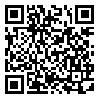Volume 18, Issue 110 (2021)
FSCT 2021, 18(110): 129-140 |
Back to browse issues page
Download citation:
BibTeX | RIS | EndNote | Medlars | ProCite | Reference Manager | RefWorks
Send citation to:



BibTeX | RIS | EndNote | Medlars | ProCite | Reference Manager | RefWorks
Send citation to:
Saberian H, ٍEsmailian A, Hosseini F. Optimization of anthocyanin extraction from red cabbage and its application in low calorie Gummy candy. FSCT 2021; 18 (110) :129-140
URL: http://fsct.modares.ac.ir/article-7-35429-en.html
URL: http://fsct.modares.ac.ir/article-7-35429-en.html
1- food additives reserach group, food science and technology institude, ACECR, khorasan Razavi, Iran
2- Department of Food science and Technology, ACECR, Kashmar Higher Education Institue, Kashmar, Iran
3- food science and technology Institude, ACECR, khorasan Razavi, Iran ,fereshtehosseini@yahoo.com
2- Department of Food science and Technology, ACECR, Kashmar Higher Education Institue, Kashmar, Iran
3- food science and technology Institude, ACECR, khorasan Razavi, Iran ,
Abstract: (3598 Views)
Aims: The purpose of this study was to optimize the extraction of anthocyanin from red cabbage and its application in low calorie gummi candy with replacement of stevioside as a natural sweetener instead of sucrose.
Materials and Methods: In this study, the extraction of anthocyanin from red cabbage powder was performed by maceration method. Extraction variables include solvent type (acidic water, acid ethanol, acid water- acid ethanol, 50:50 ratio), solvent / solids ratio (1.20, 1.30, 1.40) ml/g, extraction temperature (40-60-80 °C), extraction time (1-2-3 h). The anthocyanin extracted in the production of functional low-free calorie gummi candy was used as a food model system.
The variables in this section included three levels of Stevioside (0.5-0.1-0.15,w/w) g and three levels of anthocyanin extracted from red cabbage (0.035-0.9-1.4, v/w) ml. Statistical analysis was performed using RSM method and a Central composite design in anthocyanin extraction stage and completely randomized design based on factorial test at 95% confidence level in gummi candy production.
Result: According to the results, Maximum extraction efficiency was predicted under the conditions of Temperature and time, 40 °C and 1 hour and the solvent / solids ratio of 20 ml/g, with acidic solvent. The results of analysis of variance showed that the FI2 model was significant for the anthocyanin yield. The R2 was 0.835, and the lack of fit was not significant. The total anthocyanin concentration predicted was 300.53 (mg/100 g of dry matter). Based on the results of the tissue profile, gummi candies containing 0.9% anthocyanins and 0.1% stevia were selected and with appropriate characteristics
Conclusion: Based on the results, red cabbage anthocyanins can be used as natural dye in the production of functional foods such as gummi candy and by substituting sugar (using stevioside and inulin), healthier, more nutritious products with optimal quality characteristics produced.
Materials and Methods: In this study, the extraction of anthocyanin from red cabbage powder was performed by maceration method. Extraction variables include solvent type (acidic water, acid ethanol, acid water- acid ethanol, 50:50 ratio), solvent / solids ratio (1.20, 1.30, 1.40) ml/g, extraction temperature (40-60-80 °C), extraction time (1-2-3 h). The anthocyanin extracted in the production of functional low-free calorie gummi candy was used as a food model system.
The variables in this section included three levels of Stevioside (0.5-0.1-0.15,w/w) g and three levels of anthocyanin extracted from red cabbage (0.035-0.9-1.4, v/w) ml. Statistical analysis was performed using RSM method and a Central composite design in anthocyanin extraction stage and completely randomized design based on factorial test at 95% confidence level in gummi candy production.
Result: According to the results, Maximum extraction efficiency was predicted under the conditions of Temperature and time, 40 °C and 1 hour and the solvent / solids ratio of 20 ml/g, with acidic solvent. The results of analysis of variance showed that the FI2 model was significant for the anthocyanin yield. The R2 was 0.835, and the lack of fit was not significant. The total anthocyanin concentration predicted was 300.53 (mg/100 g of dry matter). Based on the results of the tissue profile, gummi candies containing 0.9% anthocyanins and 0.1% stevia were selected and with appropriate characteristics
Conclusion: Based on the results, red cabbage anthocyanins can be used as natural dye in the production of functional foods such as gummi candy and by substituting sugar (using stevioside and inulin), healthier, more nutritious products with optimal quality characteristics produced.
Article Type: Original Research |
Subject:
Food formulations
Received: 2019/08/4 | Accepted: 2020/08/22 | Published: 2021/04/4
Received: 2019/08/4 | Accepted: 2020/08/22 | Published: 2021/04/4
Send email to the article author
| Rights and permissions | |
 |
This work is licensed under a Creative Commons Attribution-NonCommercial 4.0 International License. |






